
Q: The raffia material seems authentically darkened by use; there are stains of sweat around the inner side and at the chin; it does not smell of any varnish or recent burning; the patina is even but not too even; the cloth hood at the back fell off some time ago, and was clearly covered with some light blue material; the forehead was covered with blue color stains, too, but was worn away; the dirt on the ‘hair’ seems truly old; the bird on the head has a hole onto which something was attached at some time; the raffia is attached by very corroded nails which do not seem to have been hit by some hammer recently. The holes for wearing were clearly not used, instead, the mask would have been held in place by the hood and the strings. Is it a Mbuya mask of the Pende? The attachment on the mask said that it is from the Vousy of Gabbon and for the ceremony of the children. Chris, 803
A: I’m impressed by how carefully you have described this mask. From what I see in your excellent description and photos, this could indeed be a made-and-used-in-culture artifact. If we could properly identify the origin, it would be quite desirable to all African art collectors. But there lies the problem. When I look at it I see stylistic elements from a number of cultures stretching from Liberia to where the Congo empties into the Atlantic. We need to find out more about this nice-looking piece.
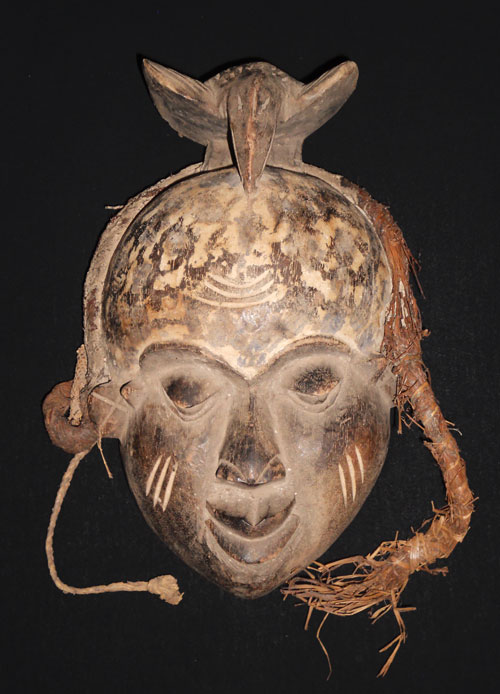
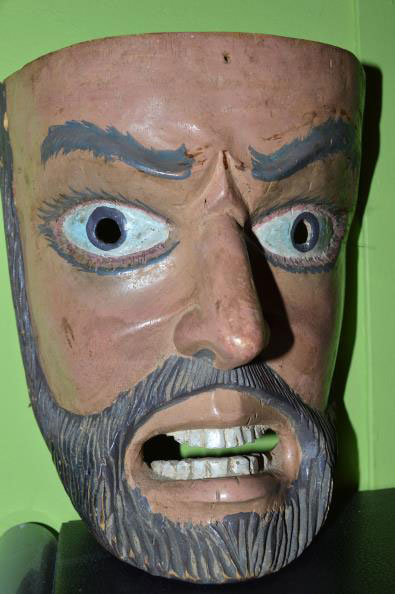
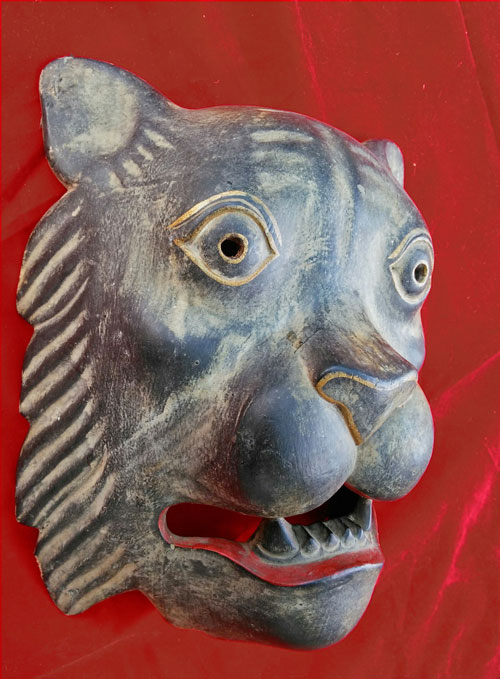
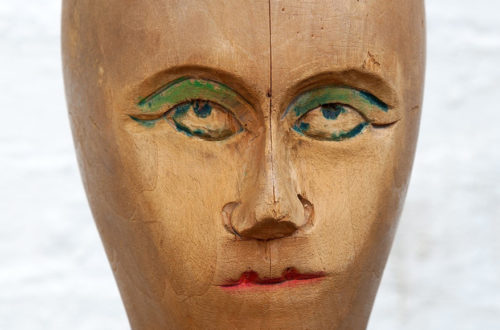

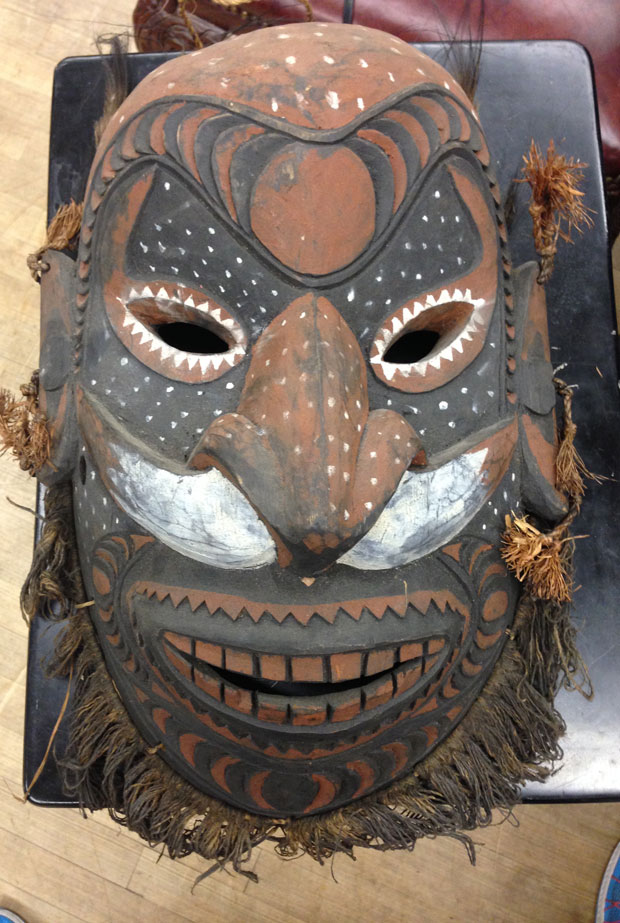
4 Comments
Chris
Hi there, I have been doing some research on this mask. You know, I am oscillating between the Pende of DRC, and the Punu of Gabon. Indices for a Pende mask abound: the incisions on cheeks and forehead; the eyelids; the raffia hood; that small nose with that slight wings; and the ‘ears’. Additionally,it seems to be a mask not worn directly on the face, but on the forehead rather. I found a pic about the Ginjinga dance of the Pende with a similar mask on the forehead of the dancer, the mask having its eyes closed as well: http://international.illinois.edu/iir/Fall%202012/encounters.html
Then, for Punu, there are also some hints: the mouth which seems to slighty smile; and the bird crest – Punu masks show sometimes elaborate crests which show almost always carved lines all over the crest. My mask’s bird crest shows the same lines. I have also found a pic of a recently made-for-sale mask of the Punu showing the same bird crest (and style of mouth): http://www.mbare.com/west-african-punu-mask-one-of-a-kind-2721 The interesting thing is that the Pende seem to have been living in the past also at the Atlantic coast of Northern Angola and Southern Gabon, and then got relocated in Western Congo. So, it seems that the present mask could be a mixture of the mask styles from these two people. That’s all to say. So, I would be happy of any further comments 🙂 thank you.
Eric
It’s a fantasy design made by tourist art traders in
Cameroun in the 1900’s or even the 2000’s.
Chris
Thank you very much, Eric, great to know!
Eric
You’re welcome, Bob is right – 99% of the market is fakes and tourist art – it’s not an easy game to find good authentic pieces for low prices!